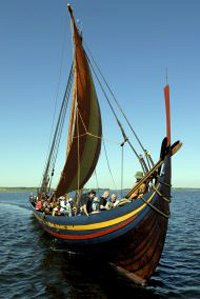Servizi Turismo
Museo Nazionale Irlanda

The National Museum of Ireland is charged with preserving and making accessible the portable, natural and cultural material heritage of Ireland while responsible for communicating to both the people of Ireland and visitors an understanding of our heritage. The museum also serves to deepen cultural ties both within Ireland and with other countries as well as opening a window on the world’s material heritage through which Irish people may appreciate their own culture in its European and global context.
The origins of the National Museum of Ireland lie with the enactment of The Dublin Science and Art Museum Act of 1877. This led the transfer of the buildings (Leinster House and the then new Natural History building) and collections of the Royal Dublin Society (RDS) to state ownership. These were further enhanced by the transfer of other notable collections from institutions such as the Royal Irish Academy and Trinity College Dublin.
The new museum on Kildare Street, was designed by Thomas Newenham Deane and his son Thomas Manly Deane, constructed by the Dublin contractors J. and W Beckett and was used to demonstrate the best of Irish craftsmanship in its construction. It is one of the best surviving examples of Irish decorative stonework, woodcarving and ceramic tiling. It was opened to the public in 1890. The museum housed coins, medals and significant Irish antiquities from the Royal Irish Academy including the Tara brooch and Ardagh chalice, ethnographical collections with material from Captain Cooke's voyages on loan from Trinity College Dublin and the collections of the Geological Survey of Ireland. These were joined by material from the decorative arts and ethnographical collections of the RDS and their Irish collections of antiquities, minerals and plants. The Irish collections span the last eight thousand years or so since Ireland was first settled. The Dublin Museum of Science and Art was renamed The National Museum of Ireland in the early twentieth century. It was more appropriate for the institution as the museum of Ireland and the treasury of Celtic antiquities. This building today is known as the National Museum of Ireland - Archaeology and History and continues to house archaeological collections dating back to 7000BC as well as some of the highlights from the Celtic Iron Age and the Golden Age of Irish Art. The Broighter Hoard, Tara Brooch, Ardagh Chalice and the Derrynaflan Hoard are some of the objects to look out for.
The Natural History Museum was opened to the public in 1857, it housed the vast zoology and geology collections of the RDS. These collections today include approximately two million specimens. The early origins of these collections from 1792 and the nature of science in the nineteenth century have ensured that the Division holds a significant proportion of type specimens in zoology and geology. Much of this collection is a legacy of nineteenth century British colonialism.
When the RDS abandoned Leinster House in favour of new developments in their Ballsbridge site this allowed Leinster house to be taken over by the Dáil in 1922. The original entrance to the Natural History Museum was through Leinster House so it was given a new entrance directly onto Merrion Street. An old barracks building at Beggars Bush, Dublin was refurbished as additional storage for both the zoological and geological collections. The botanical collections of the Museum were transferred to the National Botanic Gardens in 1970 where a new herbarium and library building was opened in 1997.
Reorganisation of the armed forces led to the closure of Collins Barracks, Dublin in 1988. It was assigned to museum use in 1994. The National Museum of Ireland - Decorative Arts and History at Collins Barracks opened to the public in September 1997. Its collections reflect the economic, social, industrial, political and military history in Ireland over the last three centuries. In addition to this are collections of Irish, European and Oriental decorative arts which give an understanding of international design and culture as they relate to Ireland.
The earliest part of this complex was constructed in 1702 as 'The Barracks'. The initial buildings were designed by Captain Thomas Burgh, this complex has housed troops continually for three centuries, earning itself a place in the Guinness Book of Records. In 1922 the barracks was handed over to the Irish Free State authorities and renamed Collins Barracks, which name is retained in its new role as part of the National Museum of Ireland.
In 1996 a decision was made to establish a branch of the National Museum to house the national collection of Irish Folklife. The new museum was to be located at Turlough Park, Castlebar, Co. Mayo. This project, the first branch of the National Museum of Ireland outside Dublin, and the only purpose-built museum erected in Ireland during the 20th century, was funded by the European Union together with State and local authority support, and opened in September 2001. The National Museum of Ireland - Country Life contains a collection of approximately 50,000 objects as diverse as ploughs, lobster pots and Halloween masks. Most of the objects are made from materials available locally in the landscape and many show great ingenuity and resourcefulness on the part of their makers. The original acquisition policy of the 1930’s was to gather “objects illustrative of the domestic life of times which have passed away recently". This led to active collecting under Dr Adolf Mahr, when Keeper of Irish Antiquities and by former Director Dr A.T. Lucas. These men were responsible for a significant proportion of the artefacts now in the collection and for their detailed contextual documentation.
( Source Wikipedia )



